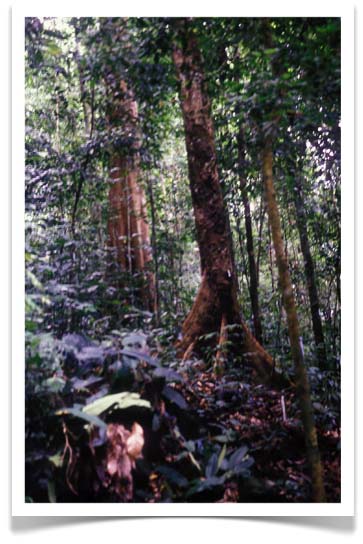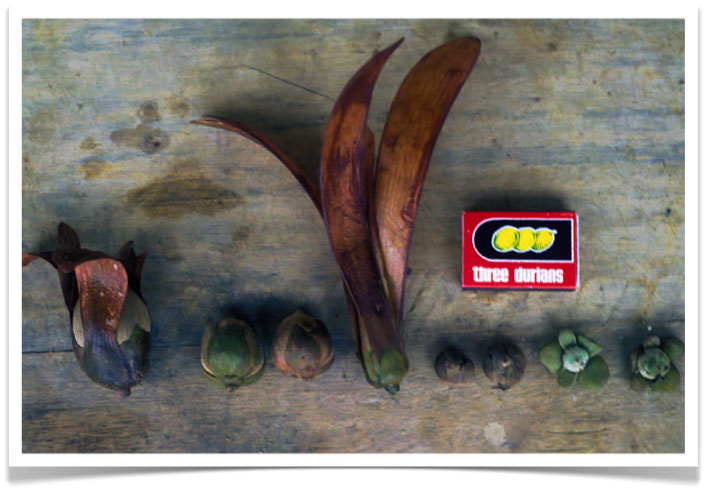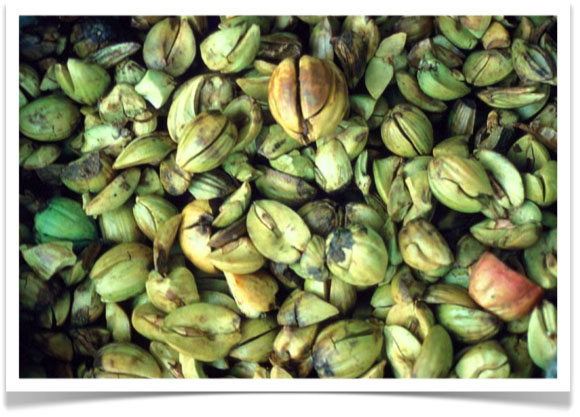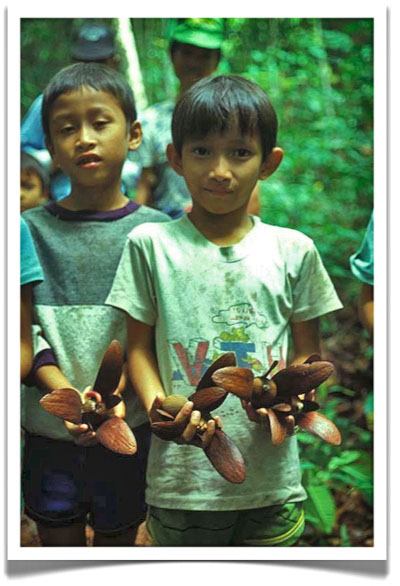 Gunung Poteng, Raya-Pasi Nature Reserve, West Kalimantan.
Gunung Poteng, Raya-Pasi Nature Reserve, West Kalimantan.
 Shorea atrinervosa. [NOTE: Metal tag with number on the lower right of the trunk; white plot stake in the foreground.]
Shorea atrinervosa. [NOTE: Metal tag with number on the lower right of the trunk; white plot stake in the foreground.]
Given the obvious supply issues caused by the unpredictable fruiting of illipe nut trees, I was very interested in trying to find an illipe nut tree that fruited every year. Soon after arriving to West Kalimantan in 1989, I went to the Raya-Pasi Nature Reserve north of Pontianak in the Sambas district. We stopped in Bagak Sawah, a Dayak village near the reserve, to pick up Pak Afong, the park warden. As we were walking to the forest, I casually asked Afong if he knew of any annually fruiting illipe nut trees. He said he did, and then proceeded to show me several dozen large illipe nut trees that I later determined to be Shorea atrinervosa. The forest floor was carpeted with the seedlings and saplings of S. atrinervosa. This was surprising because the year before had not been a mast year, and none of the other illipe nut species in West Kalimantan had produced any seed.
I spent the next three years studying a marked population of Shorea atrinervosa trees in Raya-Pasi to see if Pak Afong was right about the annual fruiting behavior of this illipe nut species. He was. A more detailed account of the story can be found here.
 Friday, February 13, 2009 at 1:29PM
Friday, February 13, 2009 at 1:29PM 







